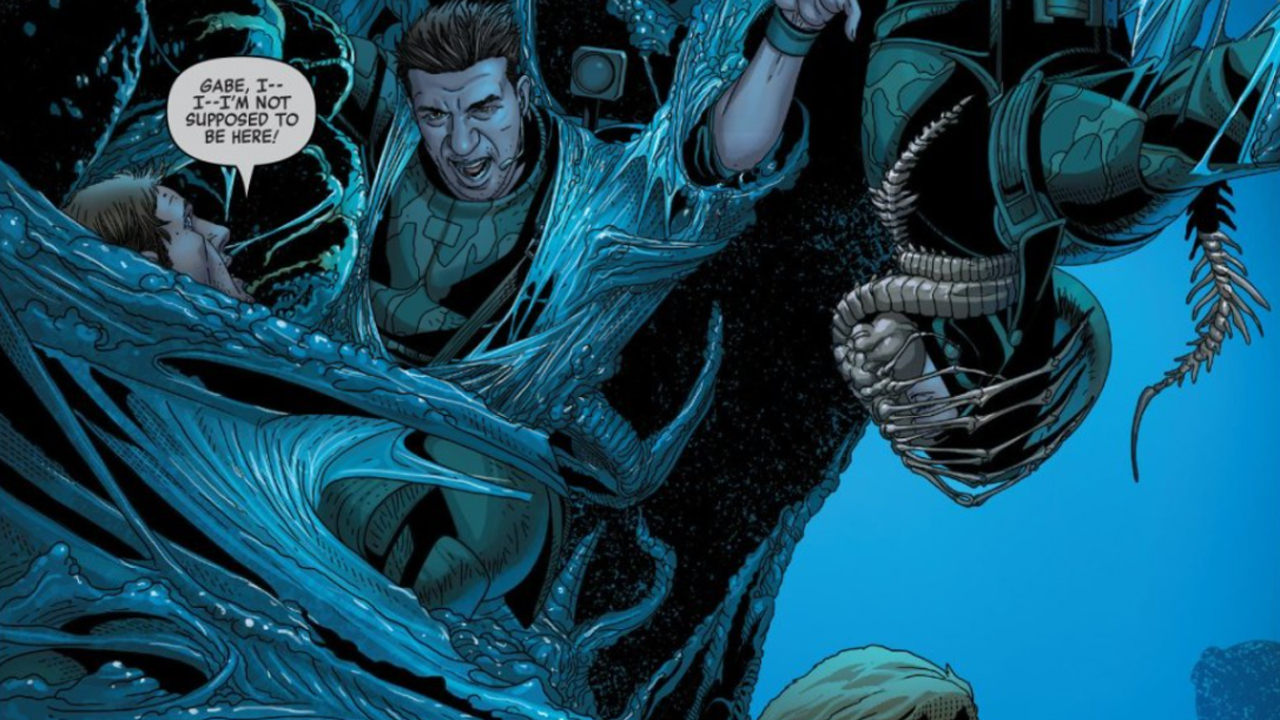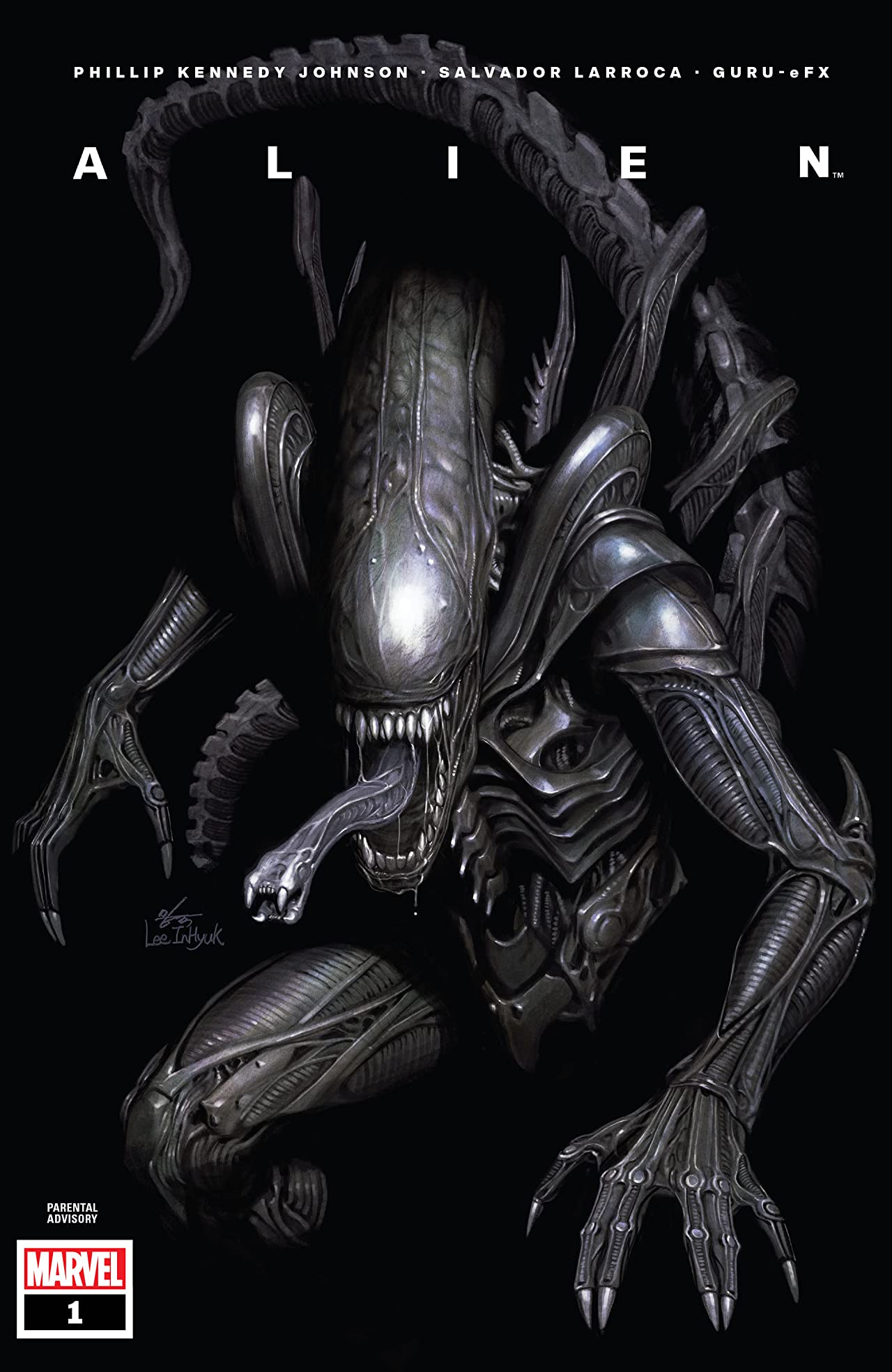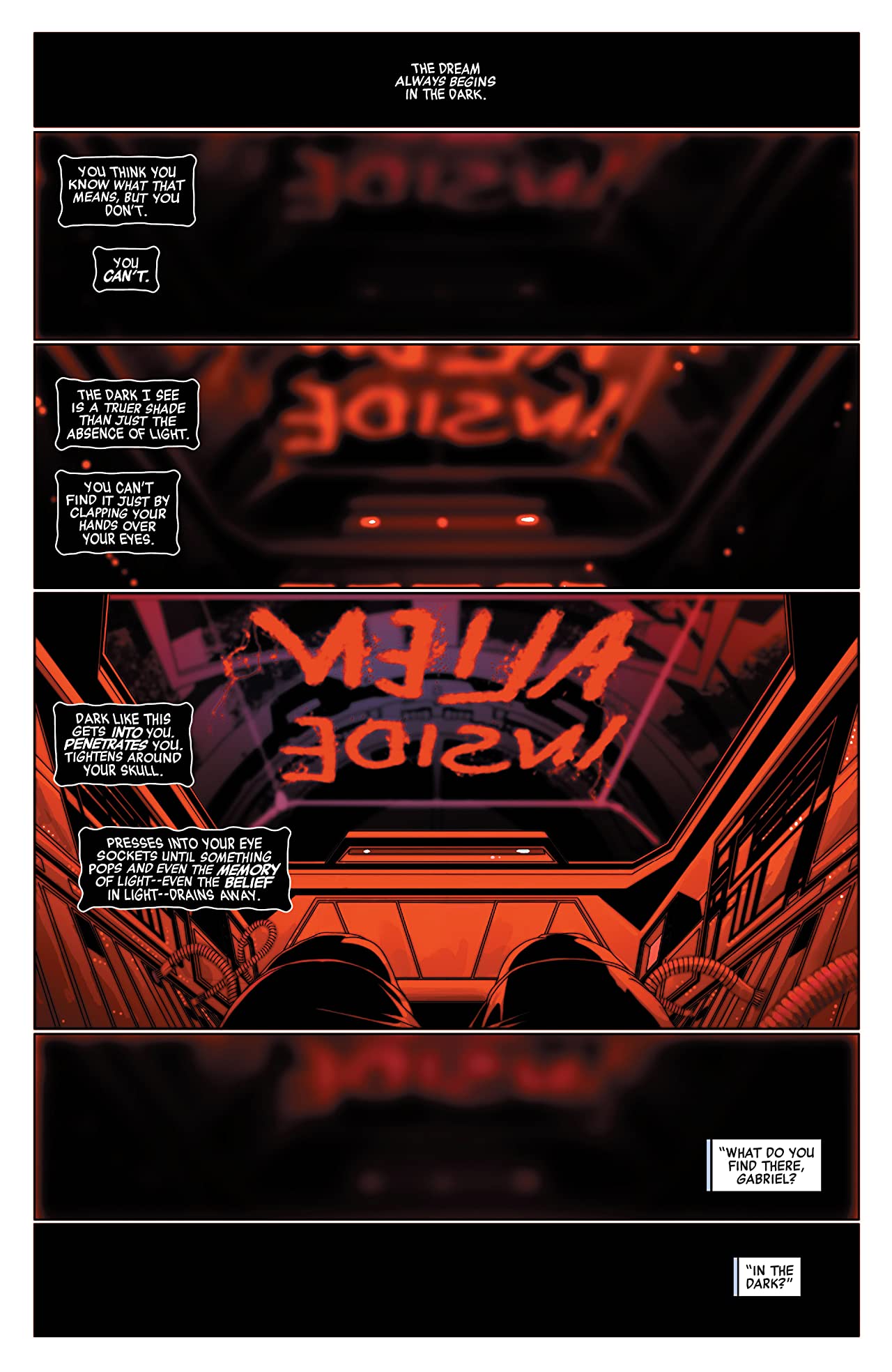Best Shots review: Alien #1 forgets the basic tone that the best Alien stories thrive on
The horror in Alien #1 is blind

"... I know that some part of me wants to be found."
In an Alien story, there should be a feeling that anything can happen at any moment. And that feeling should be dreadful. There should be a fear of the unknown, a fear of the shadows, a fear of the people that we're sharing our space with. There should be a fear of that next moment where anything could happen. There should be the feeling that we could all be killed at any moment by a creature or by a universe that doesn't care about us. It looks through us and sees nothing. It doesn't care whether we live or die, succeed or fail, are good or are bad. This universe exists despite us, not because of us. And the Aliens are the prime evidence of the uncaring nature of this existence. How else can you explain the H.R. Giger-designed xenomorph, a creature that's created just for killing?
Alien #1 forgets the basic tone that the best Alien stories thrive on — the uncertainty of what's going to happen next and whether or not we will all survive it.
Written by Phillip Kennedy Johnson
Art by Salvador Larroca & Guru-eFX
Lettering by Clayton Cowles
Published by Marvel Comics
‘Rama Rating: 5 out of 10
Phillip Kennedy Johnson and Salvador Larroca's initial entry into the Alien mythology delivers less of the suspenseful horror; instead concentrating more on a personal desire for family, for justice, and for recognition. Retiring as the security chief of a Weyland-Yutani orbital station, Gabriel Cruz returns to Earth, dreaming of xenomorphs but also wanting to repair the damaged relations with his son Danny.
"Goddamn Weyland-Yutani killed our family and he just.. let them. He practically is them," Danny tells his girlfriend.
The trauma of Gabriel's career hangs heavy over his life, having brought pain and even death to his family. Johnson and Larocca begin their story by not telling a story about the horrors found in space. Instead, they create a family drama, one that's impacted by the aliens but not yet centered on them.
Salvador Larocca's artwork lives in the uncanny valley, portraying a stilted version of reality. Larocca's drawings leave little to the reader's imagination so that there's nowhere where you feel like something is going to jump out at you. And even when things should be attacking you out of the chaos, his artwork just feels there, like he's trying to perfectly capture a film cell without trying to portray the underlying emotion of the moment. Other than trying to draw a Bishop android that has to be modeled after Lance Hendrickson, his character designs here feel slightly more original and not based on any actors as has been a problem in his before. But even without the obvious visual references copied from movie stills, his characters never quite feel like they are operating in the same space as the people they're sharing a scene with.
Get the best comic news, insights, opinions, analysis and more!
There's a troublesome disconnect between any characters when they share the same panel. Even when Gabriel and Danny hug, the two don't feel like they're truly physically interacting with the other one. We recognize their actions as a hug but we don't feel it. The same thing happens when a few pages later they're arguing about the past; we know they're arguing because Larocca's commitment to depicting the scene needs them to be acting that way but it's hard to believe that these two men are actually occupying the same room, directing their pain or anger at the other, and also reacting to what the other man is hurling at them. They are mannequins posed so that you know they're angry with each other but there's no energy on the page.
Larocca clearly gets across what's happening; his characters are moving as the story needs them to act but Larocca's work never conveys anything more than a surface-level understanding of what these men and women are experiencing. They're doing exactly what the script says they're supposed to do but there's never anything beneath the surface decisions of the artist and his inability to convey any kind of inner life for his characters. There's nothing behind their glassy eyes.
The artwork could have been a perfect fit for this book if it concentrated on the H.R. Giger-designed aliens but Johnson's story sets up some things that are more fascinating than just another monster-in-space story. From how he's setting up Gabriel and Danny's story, we get to see that this is a family that is living in the aftermath of an alien attack, struggling with how to rebuild their lives in the wake of whatever has already happened. The issue opens with Gabriel recounting his dreams to Bishop. His dreams look more like what we expect an Alien story to look like than the rest of the issues. He describes a new alien, one whose eyes are "blind, cloudy and still… And yet, I know that she has noticed me…". He admits that some part of him wants to be found by her.
Johnson introduces some potentially interesting, if slightly cliched (c'mon, a dead brother driving a wedge between a father and son?) drama. This first issue is less about aliens and more about big business and family relationships. Weyland-Yutani, the corporation that Gabriel worked for and a familiar one in Alien lore, takes the center stage of this story. A corporation that everyone has complicated feelings about, it's a stand-in for every company that claims to be a humanitarian-based business but yet makes most of its money off of the military-industrial complex. Gabriel may be one of the good guys working there but that doesn't make the whole company good. If this is a family story about a father and a son, then Weyland-Yutani is the bomb that blew up their relationship.
Something in Johnson's writing just doesn't come through in Larocca's artwork. Even when we get to a big action scene at the end of this issue, what should be one of those great tense moments where you just know it's about to hit the fan, both the writing and the artwork just fall flat and fail to deliver. This should be the moment where the creepy music kicks in and the hair on the back of your neck rises in anticipation but the sequence just comes off like both creators are just going through the paces. They know what this story beat should be but the whole thing just sits on the page, lifeless and anything but suspenseful.
It's hard not to think that Philip Kennedy Johnson and Salvador Larroca are just moving through the steps of this comic. They know the beats and the marks that they need to hit but there's no joy or delight in moving through them. There's no real light and or darkness in this story. In this kind of comic, you want the images to look at you like Gabriel wants the alien in his dream to look at him, to see you for the small, scared creature that you are. You want to be found by the things that go bump in the night and to be seen by the monsters but there's no vision in this book, no real threat to the reader. The horror in this comic is blind, never able to even glance in your direction to pull you into its clutches.
Dive into the xenomorphs world with this preview of the upcoming game Aliens: Fireteam.
Scott is a regular contributor for Panel Patter, GamesRadar, and Newsarama, covering comic books since 2002. He specialises in comic book reviews, and also runs the blog I Lost It At the Comic Shop.






